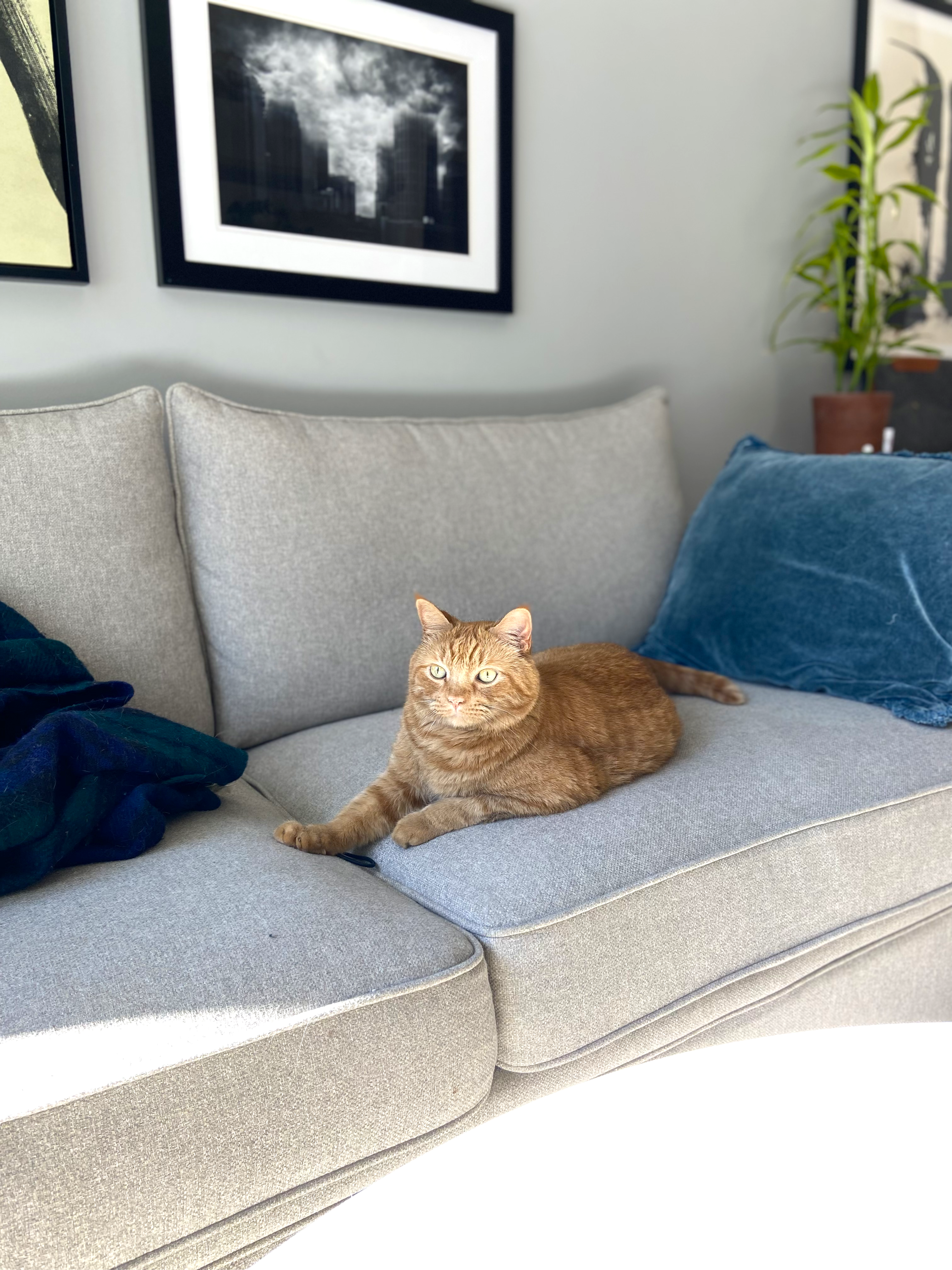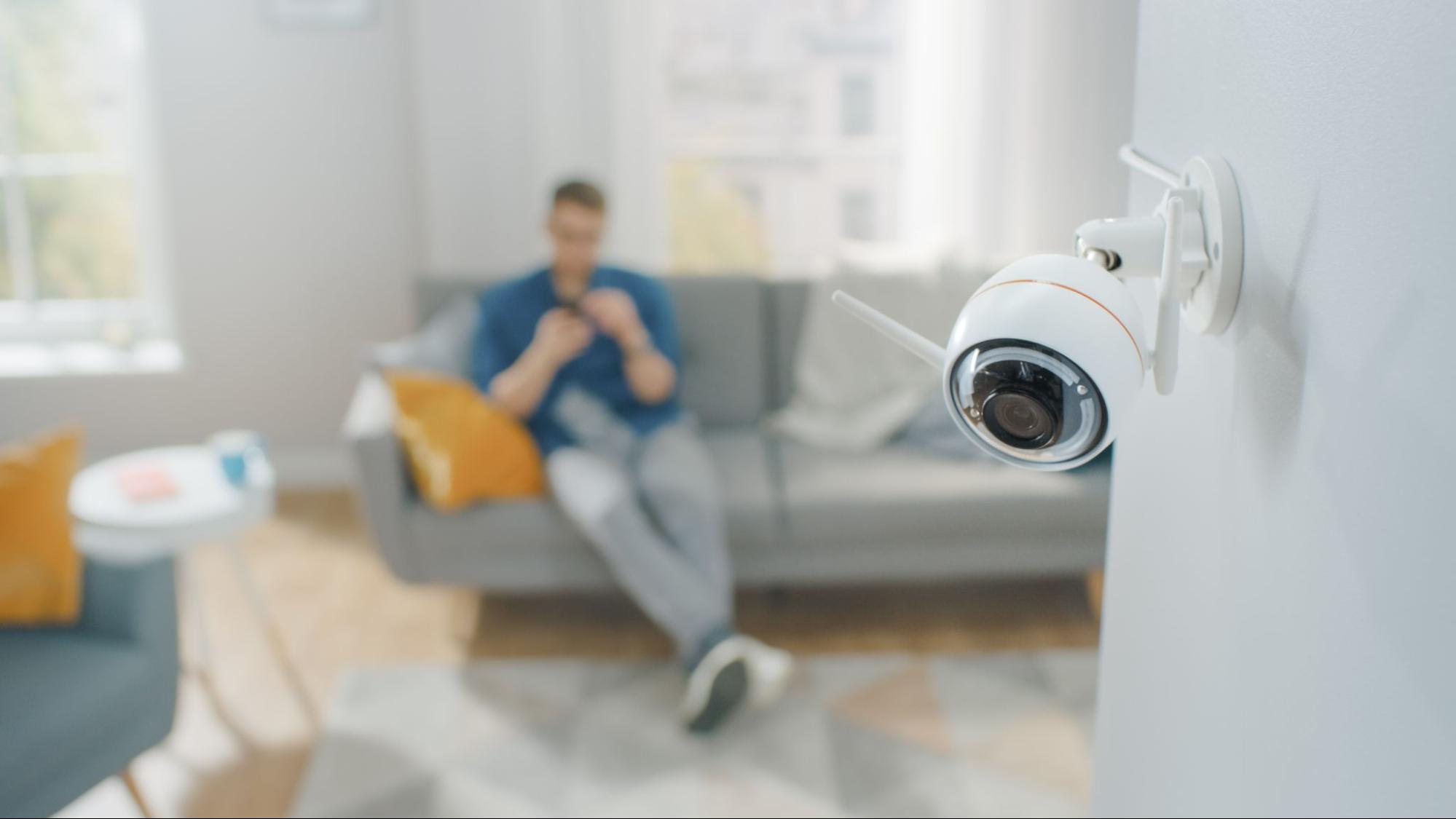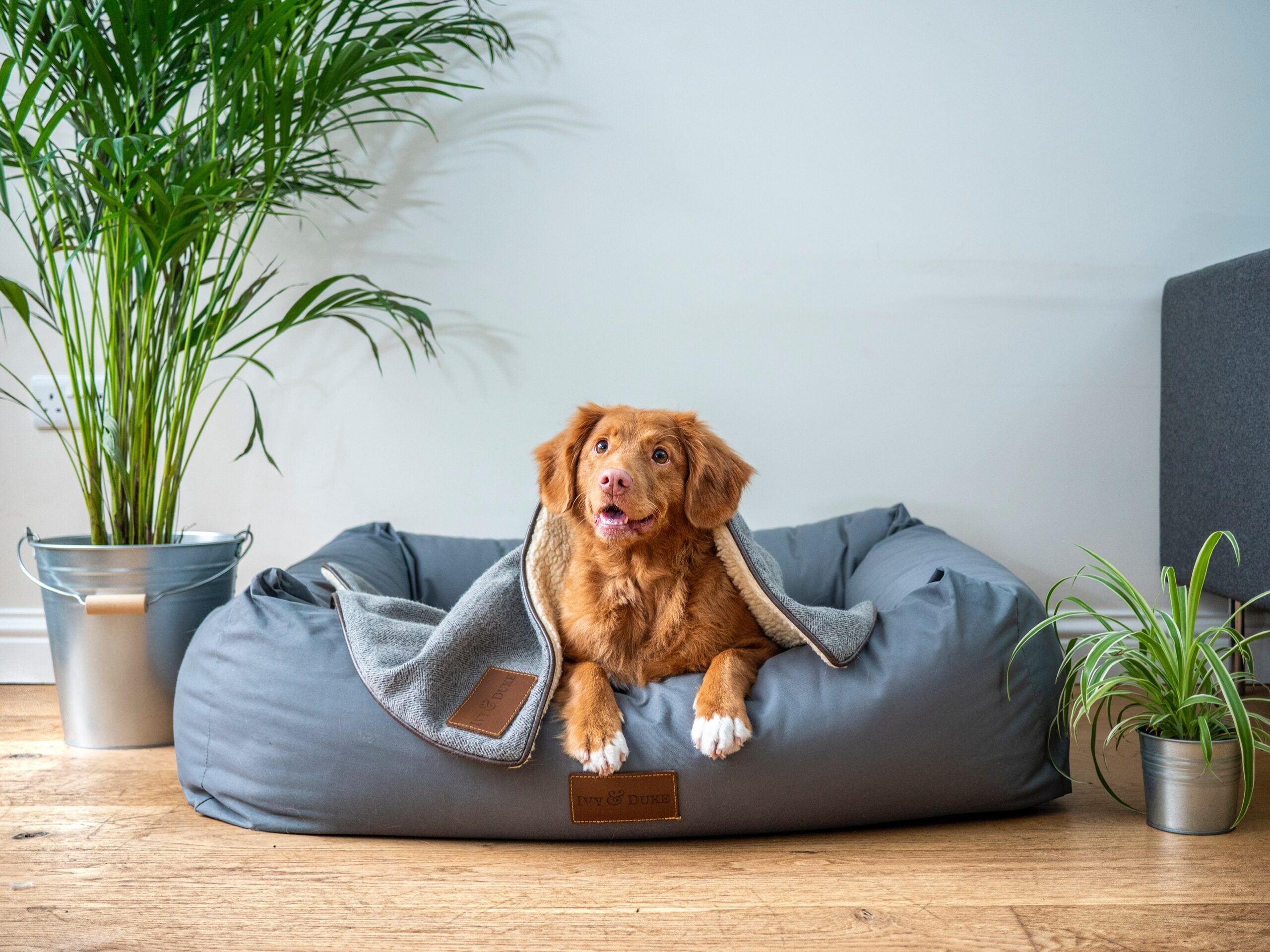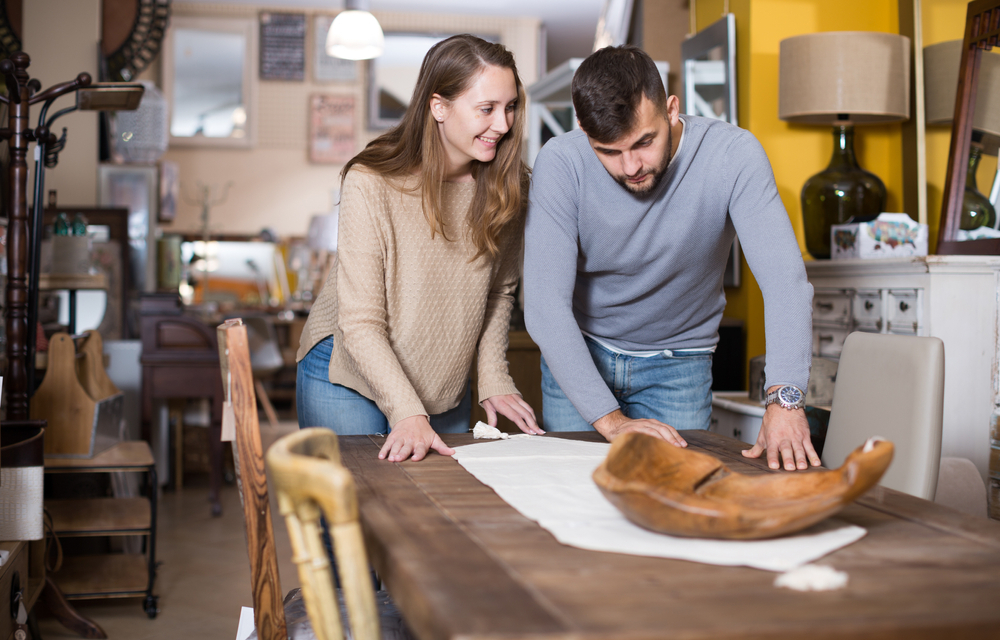
How to Keep Pets Off Furniture
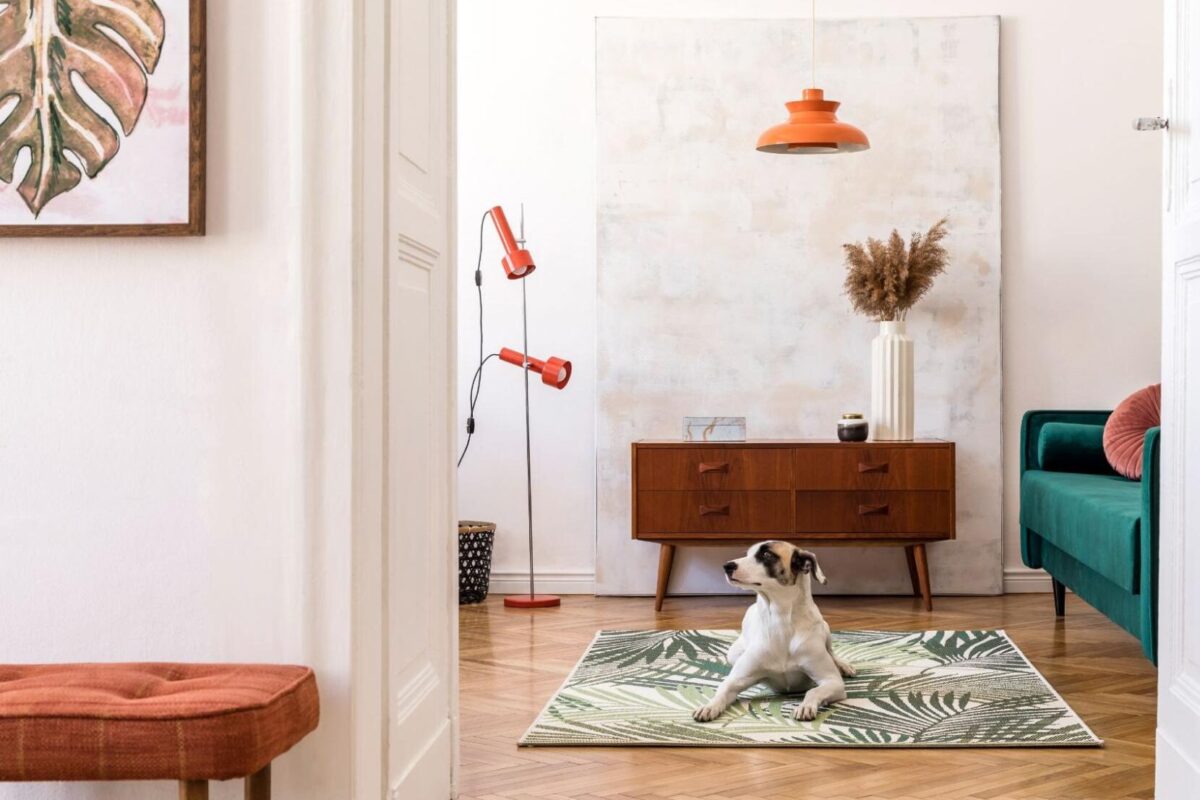
Whether you’re a new pet owner or you’ve invented a secret language only you and your animal share, there comes a time when pet owners have to lay down the law and institute some house rules.
From kitty-litter pawprint tracks on the dining room table to a bed freshly upholstered in pet hair, there are many reasons why you may want to keep your pet away from your furniture.
If you’re looking for foolproof ways to deter a mischief-prone pet from your belongings, there are plenty of tactics you can use to keep dogs and cats safe and tails wagging. This guide will cover how to keep pets off furniture, as well as:
- Reasons you may want to keep a paws-off furniture policy
- Training tactics that will keep your pet and your belongings happy
- How to keep your pet comfortable and safe in the process
For more tips on how to keep pets off furniture, read on!
Why you may want to keep pets off furniture
As a pet parent, it’s always hard to say “No!” to that wide-eyed face when they jump up to snuggle in your bed—but there are some good reasons you may want to keep pets off furniture:
- Furniture damage: Furniture is expensive, and no matter how cuddly your pet is with you, it’s unlikely they’ll use kid gloves when it comes to your belongings. Scratching, gnawing, and stubborn, smelly stains are all common complaints from pet owners. Moreover, if you ever need to sell your furniture (e.g. if you decide to move), you’ll have a harder time finding a buyer if it’s in heavily petted condition.
- Pet odor: While you may have gotten used to your beloved pet’s fragrance, the truth is that all animals can get smelly from time to time. Pet odor is easily passed on to upholstered furnishings and may be especially noticeable to any guests you have over. If you like to entertain, preventing puppy pungency will be much more effective than trying to paper over it with your famous pot roast. Sometimes it’s too late for an odor remover to do its job.
- Mild allergies: Some pet owners have mild allergies to their pet’s fur or saliva, which can cause moderate or considerably less comfortable outbreaks from time to time. Keeping your pet off furniture or finding techniques to help mitigate the residue they leave can help protect against allergic reactions and enable you two to continue sharing a happy home.
Finally, some people—especially those newer to owning animals—may want to dissuade their pets from treading on furniture as a measure of animal training. Perhaps your pet is a member of two homes with different house rules, or maybe it’s important to you to keep some spaces a humans-only zone. Whatever your reasoning, where you do and don’t let your pet in your home is entirely up to you.
Three ways to keep paws off furniture
Fortunately, there are plenty of pet-kind ways to convince your furry Michaelangelo he has better things to do than chisel his next masterpiece into the leg of your couch.
Below, we’ve listed three tried-and-true tips for pet owners to help keep animals out of restricted areas of the home—while keeping them out of harm’s way (and entertained, at that):
1. Implement a reward system
Animals are just like us, which means they’re more likely to follow the rules when there’s a reward to be reaped for good behavior.
Animal trainers have some helpful species-specific advice for cajoling cats and dogs to do what you want them to do. Here’s what you should know:
- Training your dog: A common mistake dog owners make is to inadvertently reinforce bad behavior. Dogs easily mistake physical removal as a kind of playing, and they won’t understand what “bad behavior” means if you don’t scold them adequately. While negative reinforcement doesn’t feel great, it is more effective. On the flip side, dog trainers recommend food, toys, and physical affection to positively reinforce a well-behaved pup.
- Training your cat: If you’re hoping to keep your feline from sinking her talons into your taffeta couch cushions, you may have to put in a little more gruntwork. In general, cats need more positive reinforcement than dogs when they’re being trained. Edible treats are usually the most persuasive reward to give your kitten, Greenies being the cat-crowd favorite. Tender petting sessions, toys, and catnip can work well, too.
Remember: Each individual animal has different inclinations when it comes to their responsiveness to training, depending on their species, breed, and individual personality. The process of training your pet to stay off your furniture may take some experimentation, but it can be a valuable bonding experience that helps you get to know your dog or cat even better, too.
2. Physically block off the area
If you want to keep your pet out of a specific room of the house, like the area you do your work, simply shutting the door should suffice.
When it comes to specific regions in certain rooms, you may have to recruit the help of some state-of-the-art pet-repelling tools. Here are some excellent options to get your hands on:
- The Couch Defender: The Couch Defender, also available for chairs, is a pet-kind deterrent for dogs getting pawsy with the sofa. It essentially sits on top of your couch so your pet can’t get up there. The Couch Defender is designed for easy storage when not in use, so you won’t feel like you’re purchasing an entirely new piece of new furniture to keep them off the original couch. However, bear in mind that more intrepid (or mischievous) animals may perceive this tool as more of an obstacle course and less of an impediment when they’ve zeroed in on your sofa.
- PetSafeScatMat, Sofa-sized: This invention was designed to deliver a mild, painless shock to animals when they trespass on forbidden territory. The mat has a pet-safe setting that times out (and, after a four-second interval, kicks back in) after eight seconds if the pet in question is still on the mat. This mat also comes in multiple sizes and shapes to suit whatever type of furniture you’re looking to protect.
- The X-Mat: The X-Mat is another type of non-electric training tool that uses texture, rather than electricity, to keep your dogs and cats from sitting pretty on furniture, you want to protect it. The pad is patterned with slightly raised nodules that make it uncomfortable for your dog or cat to sit on. It comes in firm and flexible designs, which means you can use it on both soft and hard surfaces (like the dining room table).
If you’re on a budget, there are plenty of other ways to get resourceful with the materials you have on hand.
For instance, if your cat is constantly trying to find his own personal Narnia in the back of your kitchen cupboards, loop some rubber bands around the handles to keep them shut. Or, if your dog is up to frisky business on the couch while you’re not home, try flipping up the couch cushions before you leave.
3. Create their dream stomping grounds
By far, the friendliest way to keep pets off furniture is to build them an alternative area they’ll love more than your loveseat.
Consider investing in a cozy dog bed to position right next to the couch so you and your pup can snuggle up side by side. Or, treat cats to a cat tree they can scratch to their claw’s content.
By integrating your habitat into a comfortable place that’s better suited for them, you’ll be able to enjoy quality time together without worrying about whether you can still have nice things. Remember, if you build it, they will come (just as you trained them to do).
How to keep your pet (and your furniture) safe
How you decide to keep your pet’s paws off your furniture or belongings is your decision, but there are some important safety tips to keep in mind before you arrive at your methods:
- Pet repellents: Pet repellents are another popular way to put the kibosh on dogs on the La-Z Boy or cats playing parkour in the living room at the witching hour. However, make sure the kind of pet repellent you use has no noxious chemicals that could be unsafe for your animal. You can even make a homemade dog repellent spray using apple cider vinegar and bitter-tasting essential oils.
- Consult your vet: At times, dogs or cats leaving their marks all over your belongings may be a sign of a deeper problem. Ear infections are one of the most common medical issues dogs contract in their lifetimes, and rubbing, chewing, or knocking their head against furniture is a tell-tale sign that they may have one. If you’re concerned about your animal’s behavior, it may be time to take them to the vet.
Remember, redlining your furniture isn’t just a vanity issue—it’s also an important way of keeping your animals safe and healthy.
There are plenty of compartments around the home that animals won’t know to avoid, like the cleaning supply closet, collapsible furniture, or heavy artwork. If you’re a new owner introducing a dog or cat you don’t know all that well yet, be sure to pet-proof your apartment before you bring your new fur baby home with you. Decluttering your home can help create a safer environment for your furry friend and prevent too much pet damage to furniture.
Have pets—and nice things!—with Landing
If your apartment is tailored to your lifestyle, you don’t have to worry about tailoring your apartment to your pet. Landing’s nationwide listings of luxury apartments include options for pet owners old and new, which means you won’t have to fact-check your furniture to see if it’s pet friendly—or worry about having to buy any in the first place.
Our flexible-lease apartments are hand-picked to make the daily labors of apartment living a non-thought, with fully furnished apartments complete with apartment amenities like cooking supplies, on-location laundry, and even toiletries. To simplify living the pet-parent lifestyle, connect with Landing today and track down your next pet-friendly apartment.



